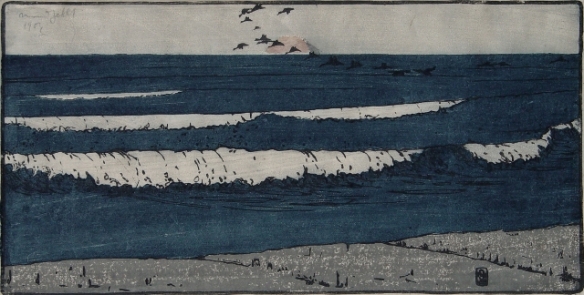Kent Klewein of Gink and Gasoline (by far one of the best fly blog of the internet for original content, both ideas and pictures) shares his take on a massive trend in the fly rods industry: building for distance.
Every time I visit a fly fishing trade show and walk by one of those 100′ casting ponds filled shoulder to shoulder with anglers all trying their best to land their fly on the far end of the casting pond, I ask myself, “is that really what the majority of anglers today think fly casting is all about”? A part of me thinks we should shorten those casting ponds all together, and instead throw out a bunch of target rings at random distances starting out at 20 feet. Maybe that would paint a clearer picture of what fly casting is about and how a fly rods performance should be judged. Casting a 5wt and shooting backing through the tip of the rod is hard to do, and something to be proud of, but is it really what we find ourselves doing when we’re out on the water trout fishing?
Furthermore, have we all become so tunnel visioned that we feel it’s correct to judge a fly rods performance and craftsmanship based on how much fly line it can pick up and carry, and how far we can cast a fly with it? That’s not how I judge a fly rod. It’s about a fly rods ability to drop a dry fly perfectly into the feeding lane of a rising trout, it’s about effortlessly making a nice side-arm roll cast along the far bank under the overhanging foliage. It’s about having a rod in my hand that gives me the confidence to feel like I’m in complete control for the fishing situation at hand. I don’t know about you, but I’m tired of watching the fly rod companies battle it out on who can design the next ultra-light fast action broom stick. I’m ready for them to start taking a serious look at areas of fly casting and rod design other than distance.
I have already written about this here. I have seen plenty of people going for very stiff and tip-actioned rods, only to overline them one or two AFTMA ratings in order to be able to cast them properly. That’s just nonsense. Of course, the casting heroes like their broomsticks, and they even fish with them. But they tend to go the other way around, and actually underline the rods. That’s what you do when you want very high line speed, as explained here, but then speed is of no use whatsoever if you can’t control it, and that’s where everything goes pear-shaped for the common caster.
In this case, I find it particularly interesting that the complaint comes from a guide, who’s arguably a quite competent caster, certainly way above the average skill level of the people shopping TCXs.
I also sense a kind of relation between the described trend, and the fiberglass renaissance we’re witnessing. All of it is quite interesting.








